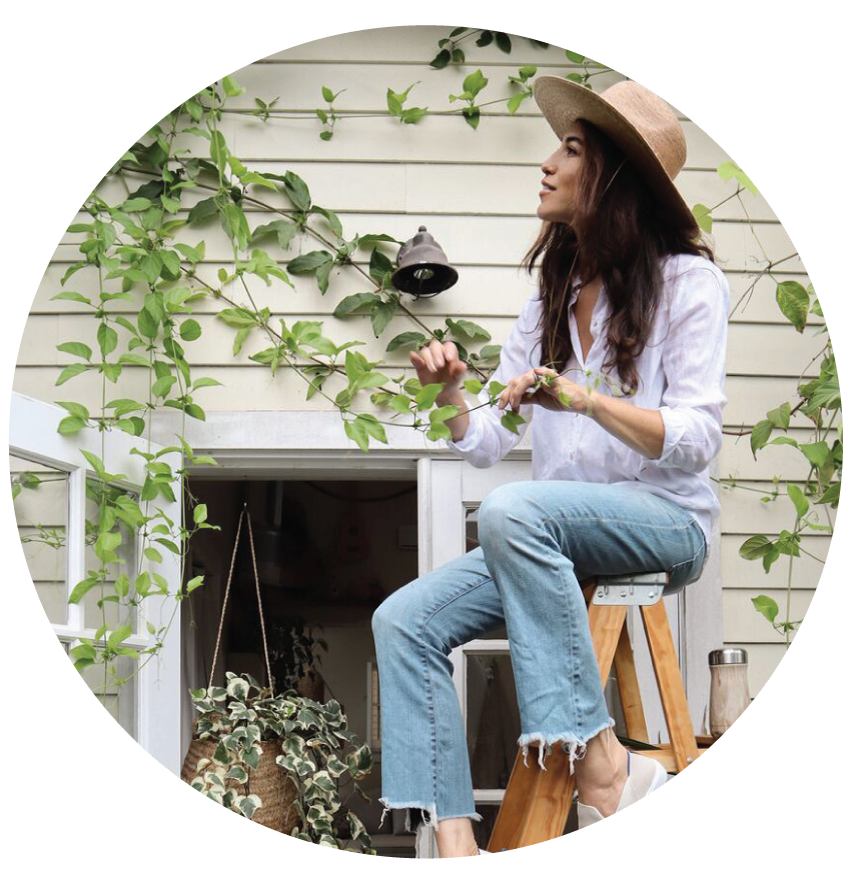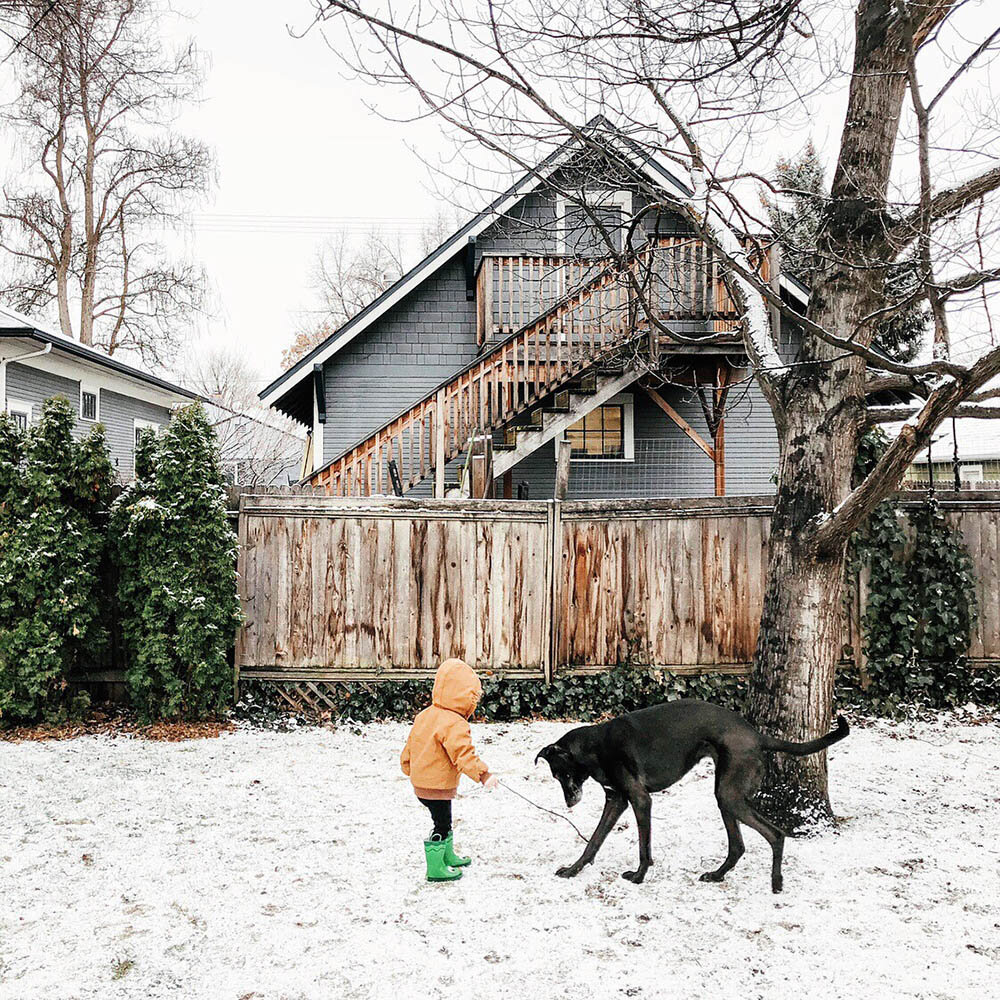Small Space Clothing Storage in Cold Climate Regions
Small homes/apartments located in regions with colder climates face their own unique storage challenges. When one sweater or jacket requires as much room as a small stack of summer clothing, or when a single pair of boots are all you can fit by the front door, space suddenly becomes that much more challenging to find, create and/or maintain. And, as storage space gets eaten up, spare inches intended for relaxation, work or play are often infringed upon, just when you need them most while spending more time indoors.
I have rented several small apartments (with no outdoor space) in regions with freezing weather the past. From living in a makeshift, triangle-shaped bedroom that doubled as a close friend’s home office, to spending years with a partner in a typical New York City walk-up (which was not only tiny, but was also booby trapped with exposed heating pipes that sizzled my skin any time I reached for a book or bent over to put on my socks, I have grappled with storing cold weather gear in a compact home.
Still, I’ve hesitated to regularly approach the topic of how to manage clothing in small spaces that properly experience all 4 seasons, as it’s been a decade since I’ve lived full-time in a compact residence in an area that experiences temperatures ranging from 10° to 100°F. But in a recent round of open questions, several readers requested that I tackle the topic. So here I am.
Before looking directly at the wardrobe solutions, I’d like to back up and approach the issue from a wider view. Because In order to preserve space needed for boots, layers, gear and dripping umbrellas or hats, it can help to first have smart and hardworking furnishings in place.
FURNISHINGS
By selecting multitasking furnishings, you might be able to open up spots throughout your home for everyday cold weather wear that is too bulky for a standard drawer or bin.
A dresser desk (preferably one with a folding or telescoping work surface) can store clothing while also operating as an workspace for kids and/or adults. Similarly, a transforming coffee/dining table combo can easily merge the bulkiest furnishings between a dining and living room. And, if you have room for a nightstand, opting for one that can perform the duties of a vanity, dresser, or bookshelf is highly useful.
Luckily, many of these items have been around for decades, and can be found via vintage and second-hand sources.)
HOME DECOR & ACCESSORIES
Try to avoid home accessories that use valuable floor space.
For example, instead of leaning your mirrors, mount them on doors or walls. (Or if you are going to use a leaning mirror, find one that comes layered with hooks, shelves or ledges so it can multitask.) And rather than selecting tabletop and floor planters, try suspending your year-round greenery from the ceiling hooks or from your existing hardware such as curtain dowels. Collapsible/folding, hanging or soft-form hampers will provide more versatility than bulky inflexible bins, allowing them to move into new locations when you switch things up in your home as life evolves.
WARDROBE SOLUTIONS
I hesitate to share many clothing storage solutions. They’re often made of plastic, and were invented to deal with our overflow of belongings. The less stuff we have, the fewer organizers we need, and the lighter our environmental footprint.
Yet there’s no denying that a smart space-saving tool here and there can work wonders (and prevent daily frustration) in a minuscule closet. So here are a few of my favorites concepts from my previous lives in colder climates.
Single Wall-Mounted Hooks - Consider hanging your largest and/or most-used coats from simple, single hooks mounted to your walls (rather than clumping them together on an over-burdened multi-prong coatrack or in a closet). They’ll be easier to access, and will have more room to dry without battling other clothing for space. Not every hook has to go by the door. If you have a long narrow hallway, put it to further use by dotting it with generously-spaced hooks. If you have awkward corners in your room or barren inches on the exteriors of bookcases or dressers, they might all be perfect spots for hooking up a jacket and/or scarf.
Dowels or Tension Rods - There are oftentimes lost inches inside wardrobes and closets. Tucked above and behind your standard hanging rack you might be able to mount another rod where your scarves can drape. Hook gloves and hats to it easily with hanger-top boot clips.
Hanging Chain / String - When suspended vertically from the ceiling in an unused corner, a chain paired with s-hooks or a string coupled with clothespins can organize your family’s hats and gloves while allowing them to air out.
Wall Mounted Drying Rack - A multi swinging arm wall mounted drying rack is not only smart for laundry, but it can hold your daily coat, scarf, tote and gloves as well. When it’s not in use, just tuck it back up against the wall.
Vacuum Bags - I’d be lying if I said I didn’t buy vacuum bags during the many years in which I lived in the Northeast. I used them for on AND off-season clothing storage. Once the clothes are in and sealed, the bag itself can slide under a bed, or behind hanging clothes in a closet— the pack doesn’t need to go in yet another storage bin. I also used hanging vacuum bags for a couple of bigger coats that I kept in the closet because they were not my daily pieces. (In retrospect, I should’ve donated them upon moving in, but for sentimental reasons I’d yet to conquer at that point in my life, I didn’t.) Once you’re done with this style of bag, pass them on to someone who can continue to use them— there’s no shortage of folks in the city looking for ways to save space.
DIY or Adjusted Shoe Racks - I find that most shoe racks are obnoxiously squat between levels. This renders them nearly useless with cold weather boots. And when nothing fits well, the whole thing becomes a complete mess. With certain models of shoe racks, you can opt to skip a shelf in the middle, providing more space for tall or bulky boots. (Too many shoes for the rack? Stop buying new pairs until you absolutely need to, and consider donating a pair or two to a local homeless shelter.) Better yet— upcycled/repurposed old wine crates can be secured together (and to the wall) and positioned like cubbies against a wall for a dynamic and customizable shoe gallery. The tops of the crates are often just the right depth for small items like keys, eyewear, handbags, small plants, lunchboxes, and mail catchalls.
Unexpected Shelving - Over the door ledges, corner platforms, and upper wall shelving than runs a foot or so beneath the ceiling are all additional ways to seize vertical space either for your winter gear, or for other items that will then free up drawer, shelf and closet space for your bulkier garments. If your small home or apartment is starting to feel cramped or cluttered with so much exposed storage, streamline the look via baskets to suit your decor style. It’s remarkable how a row of mismatched vintage baskets, or a collection of natural repurposed crates, or a tidy line of matching modern bins can add personality to your home while organizing and concealing your essentials.








